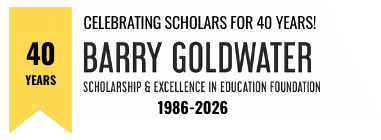A sustainability fanatic from a young age, Christina Chang was the kid who turned off lights in empty rooms, led Recycling Club, and screened Captain Planet re-runs in her high school’s cafeteria every Earth Day.
Her early passion for environmentalism shines through to this day: determined to help secure the future of global energy, Christina is currently working to develop an inexpensive and scalable method to produce thin-film solar panels.
Eager to combine her environmentalism and love of science, Christina credits applying for the Goldwater Scholarship as an experience that influenced her career objectives. “The Goldwater application was my first research proposal. I learned that that science is a truly creative endeavor: I was limited only by my imagination and the laws of physics. I became excited to propose inventions that could improve the health of people and the planet,” she says.
Funded by the Goldwater Scholarship while at Princeton University, she worked in the lab of chemistry professor John Groves. While there, she made a discovery that solidified her interest in solving environmental problems through applications of science. Christina was studying the generation of chlorine dioxide — a powerful water disinfectant — by a catalyst developed in the Groves lab. Christina discovered that when cyanide was added, not only did it accelerate the production rate of chlorine dioxide 200-fold, but also cyanide itself vanished in seconds, having been converted to cyanate, a far less toxic product. In her undergraduate thesis, Christina examined the ability for her discovery to alleviate a common environmental hazard: the pools of cyanide-contaminated water that accumulate at metal mining sites.
Christina went on to secure the Marshall Scholarship to study for two years in the United Kingdom. A year-long MSc in Sustainable Energy Futures at Imperial College London helped hone her understanding of the global energy landscape. She then pursued an MPhil in Chemistry at the University of Cambridge in the laboratory of professor Erwin Reisner, where she developed a unique nanoparticle-based system that uses sunlight to power the conversion of water into hydrogen fuel, a project that won her the Dow Sustainability Innovation Student Challenge $10,000 Grand Prize.
Now a PhD student in professor Roy Gordon’s laboratory at Harvard, Christina is inventing a new process to manufacture low-cost solar panels. To accomplish this goal, she and PhD student Rachel Heasley have designed and built the necessary equipment: a chemical vapor deposition reactor. In the photo above, Christina (left) conducts experiments with a third team member: high school student Kathy Liu. Christina was delighted to recruit Kathy via an internship program of special significance to her: the Research Science Institute (RSI), the very same program that exposed Christina herself to laboratory research as a high schooler. Christina celebrates collaboration as the best part of her job: “Science is so much more fun when it is shared! Plus, we published our discovery much more quickly by working together.”
As a student at Harvard, Christina is working toward realizing three career objectives that matter most to her: developing global sustainable energy technologies, mentoring young scientists, and building public support for sustainability. An active student leader within the Harvard University Center for the Environment and the Center for Public Leadership, Christina believes “my generation has a great opportunity and responsibility to work together to serve the world.” She is leaving no stone unturned in fulfilling her passion for science in the service of society.

